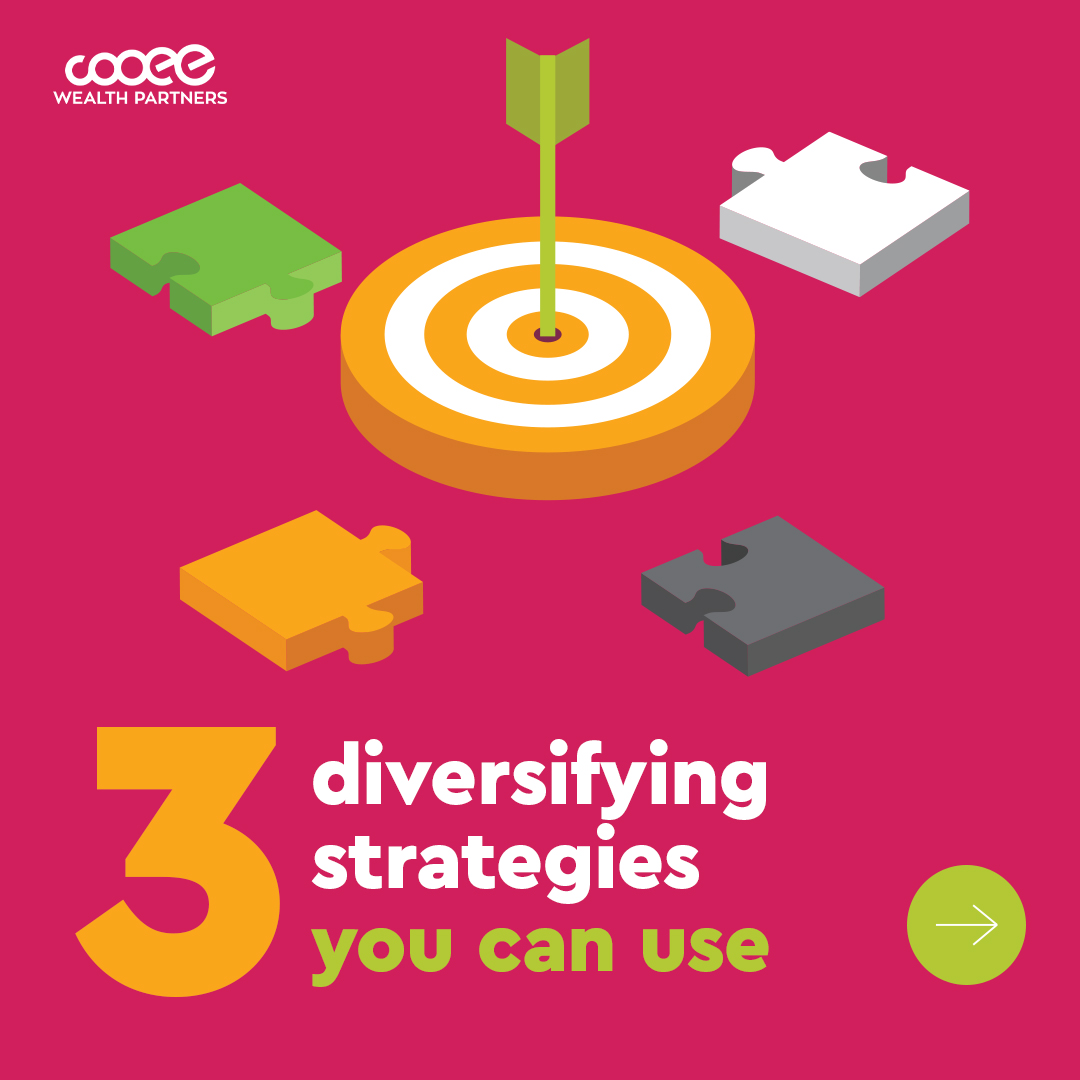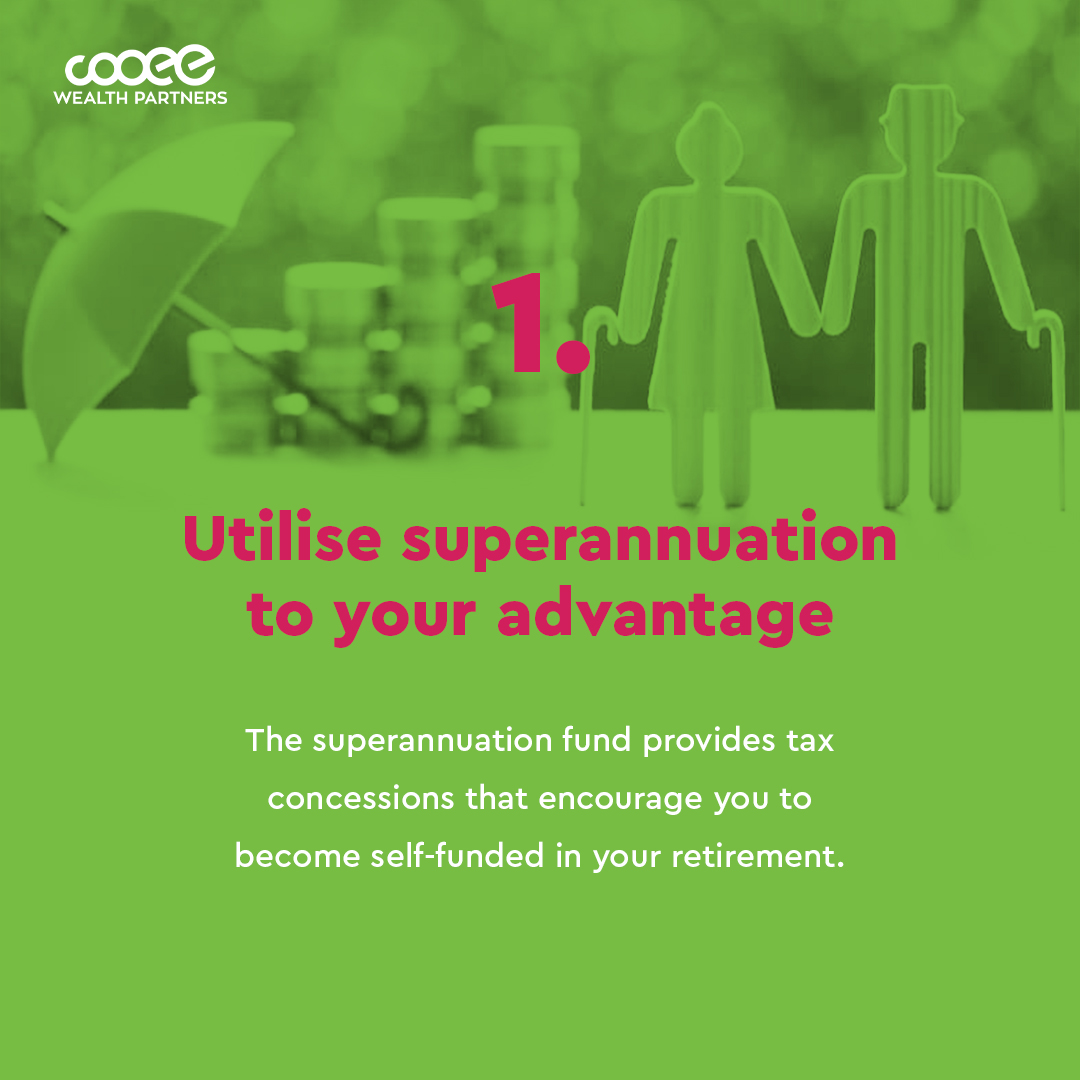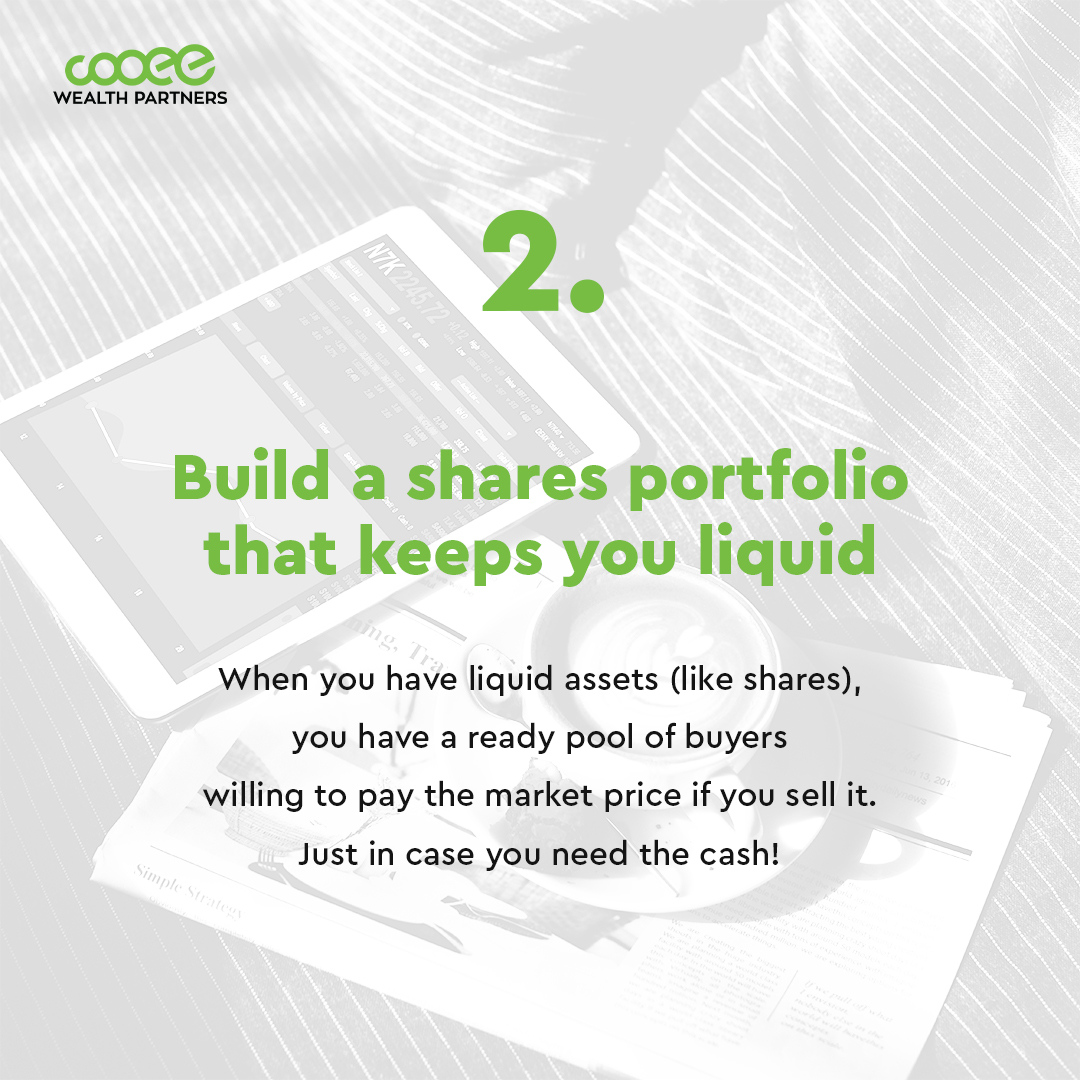
It’s been said before, but we’ll say it again: Don’t put all your eggs in one basket.
It’s easy to go all in with one investment when it’s performing well, but you need to have different investment strategies in place so that you’re ready when that investment falls behind.
We see a lot of people go all in on property investments. They use property investment strategies to purchase multiple properties, such as borrowing against their equity or setting up an SMSF.
The property market has performed well in the last 30 years, but you can’t assume that this will be the case for the next three decades; it’s a good investment to add to your portfolio, but it is not the end-all-and-be-all. If an investor has exclusively invested in property, they won’t have anything to fall back on if those property investments’ performance starts going down.
 |
At Cooee Wealth Partners, we encourage investors to include property as part of their portfolio, but we also believe that that’s not the only strategy that can help you build wealth. Having a truly diversified portfolio helps you achieve your financial goals because you’re generally less vulnerable to movements in asset value. In a nutshell, a truly diversified portfolio is composed of assets that respond differently to changes in the market, increasing your investments’ potential for gain and loss through domestic shares, international shares, fixed-income securities, cash and real estate. In this article, we discuss the diversifying strategies that can help you build that diverse portfolio. |
Why do you need to diversify your investment strategies?
It’s essential to diversify your investment strategies because it’s your best defence against a single investment failing or one asset class performing poorly. Having a diverse range of investment strategies is the first step to building a portfolio that can weather ups and downs through time. No matter what the economy does, one investment is likely to benefit, so this helps balance the fall from others.
3 diversifying strategies that you can use

Like other investment decisions, you need to keep your options open and weigh these choices carefully before investing. We’ve shortlisted three strategies you can incorporate into your plans.
1. Utilise superannuation to your advantage
The superannuation fund exists to provide tax concessions and encourage people to become self-funded in their retirement. You can leverage concessions to your advantage while enabling you to contribute to a secure retirement. Making the most of your superannuation can look like:
- Tax deductions for certain super contributions.
You can utilise salary sacrifice contributions to exchange an equivalent increase in your super contributions, or you can use personal concessional contributions from your bank account to claim a tax deduction when you submit your tax return.
- Reducing or eliminating CGT through super contributions.
When you sell a business or a business asset that results in a realised capital gain for assessment of capital gains tax purposes, you have the option to reduce or disregard the capital gain by applying a Small Business CGT concession.
-
Concessional tax on super investment earnings.
All earnings derived from investments within a superannuation accumulation account are taxed at a maximum of 15%, including realised capital gains. This is a lower tax rate than the average working person’s marginal tax rate. Once you retire and convert your super to an income stream, all investment earnings are received completely tax-free.
No matter what method you choose for your superannuation, you must keep in mind how it contributes to the overall balance of your investment risk.
2. Build a shares portfolio to keep liquid
Liquidity refers to the ability to exchange an asset for cash with little or no trouble and added cost. When an investment is a liquid asset, you have a ready pool of buyers willing to pay the market price if you sell it. This kind of asset may well be considered as good as cash, but of varying values depending on the movements in the market–just guaranteed a sale.
It’s important to keep a portion of your investments in liquid assets because you need to be prepared for any event that will prevent you from reporting to work, like organisational changes, natural calamities or other conditions out of your control.
It helps to keep several months’ worth of liquidity so you’re prepared for multiple situations, whether it’s as major as a global emergency or for a more common issue such as an unexpected car repair, job loss or a trip to the emergency room. This fund keeps you from having to take on extra debt when these things happen, giving you some peace of mind.
With liquid assets, you can manage to stay afloat for months using these cash reserves, which you can use to purchase groceries, bargain with neighbours, or barter for goods. That’s a lot harder to do if you tie up all your investments in property because you can’t sell just the bathroom in your property investment, but you can sell part of a share portfolio if you need to.
3. Establish a good cash flow structure
To build a good cash flow structure, you need to put in the right amount of money towards living expenses, debt reduction and building investment portfolios.
As a general rule, focusing on paying off debt over building your wealth may not give you the best cash flow structure, since you could run out of cash for expenses and setting aside investments for the future. There needs to be a right balance between living expenses, good debt and bad debt, as well as any savings you may have.
When setting up your cash flow structure, you need to keep in mind the following:
- Paying off debt frees up more cash to save or invest, and reduces overall interest charges to build wealth.
- Having savings could help you avoid taking on more debt in an emergency, and interest earned on savings can counter the interest paid on loans.
- Compound interest helps build long-term wealth.
You need to draw up your budget, set goals for both debt payoff and savings, find ways to increase your income and cut expenses, as well as set aside money for a rainy day fund.
When it comes to building an investment portfolio, you should also make sure that you have metrics that you and your financial adviser can easily follow. That way you can monitor your investments, make adjustments when necessary and see if they’re heading in the right direction:
- Compound Annual Growth Rate (CAGR)
refers to your strategy’s performance over time, factoring in dividends and gains into the annual growth figure.
- Benchmark comparison
is a measure of how your investment performance compares relative to others.
- Sharpe ratio
calculates the risk, sizing it up against potential gains.
- Beta
takes every stock in the market, combines it into one and calculates its volatility.
You can extract equity from your assets to buy more property or purchase shares. You can also swap out principal and interest loans on an investment property to interest-only to free up cash flow so you can put more money into super.
There are different areas that investors need to consider; it’s about balancing the need for growth, income liquidity versus illiquidity, tax effectiveness and timeframe. Having a wide range of strategies for your investment can give you flexibility and agility in your investment journey.
Book a call with one of our Wealth Partners to expand your lineup of investment strategies.





